Logan MacDonald
BORN / NÉ À Epexiwitk, Mi’kma’ki / Summerside, PEI / IPÉ
LIVES / HABITE À Tkaron:to / Toronto, ON
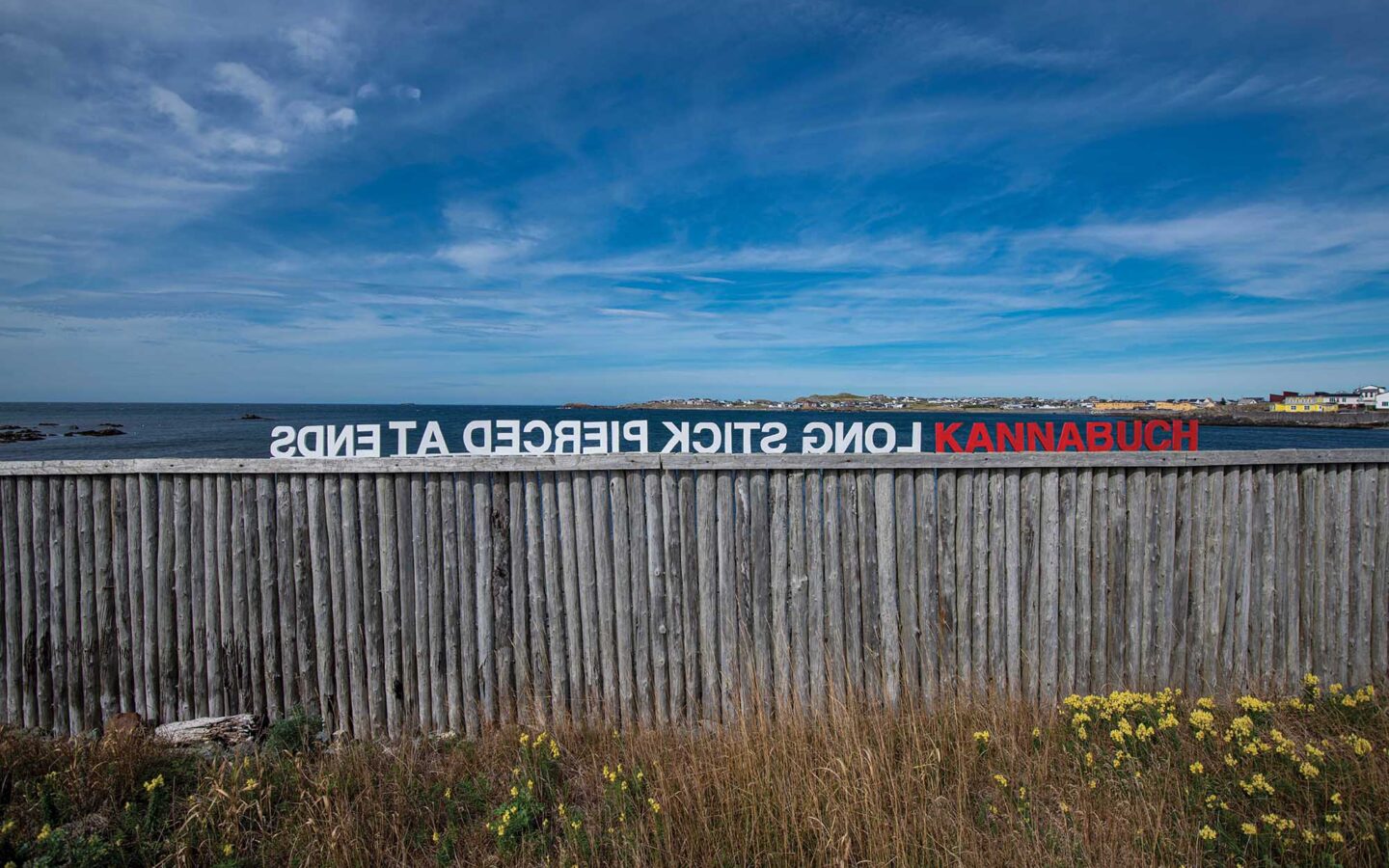
BORN / NÉ À Epexiwitk, Mi’kma’ki / Summerside, PEI / IPÉ
LIVES / HABITE À Tkaron:to / Toronto, ON
Bodies on the Beach 2021
Site-specific installation / Installation in situ
Site 5 – Long Beach, Bonavista
In this site-responsive installation, MacDonald examines the language and mechanisms deployed in the fabrication of history. On June 24, 1497 the Cabot expedition made landfall on a North American shore, disembarking near the place where land was first sighted. Based upon letters from Bristol merchant John Day of Cabot’s account, we know that amidst tall trees they found a trail that went inland. Following the trail they discovered remnants of a recent fire and farm animals, as well as a pierced stick, carved and painted red. Red ochre was used by the Beothuk people in ceremonies. In his letter, Day notes that “by such signs they believe the land to be inhabited.” This acknowledgement is fundamentally contrary to the Doctrine of Discovery, which was used as legal and moral justification for colonial dispossession of sovereign Indigenous Nations across the continent.
Originally planned for the John Cabot statue site at Cape Bonavista, MacDonald’s site-responsive installation at Long Beach in the Town of Bonavista used excerpts from Day’s letter, translated by the artist into Beothuk, the indigenous language of Ktaqmkuk (Newfoundland). Hand-fabricated words were mounted atop the fence along the beach, the English texts painted white and the Beothuk texts red. Viewed from land, the Beothuk words were legible read from left to right, whereas the English text was reversed and legible only from the sea. Through this installation MacDonald lyrically explores how to bury a broken history to reimagine how we can honour Indigenous connections to the land, as opposed to false and destructive narratives of colonial conquest. These texts, materials and actions point to collective paths forward for a region, province and nation undertaking the difficult processes of decolonization, prompting the question of which legacies should be upheld as part of our collective public trust.
MH
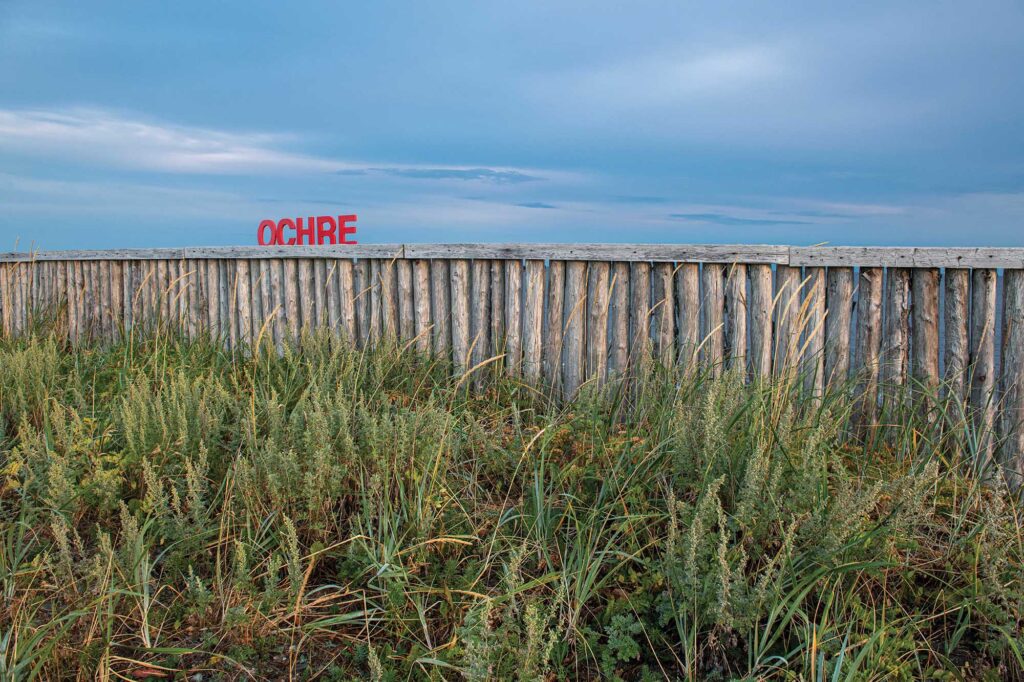
Bodies on the Beach 2021. Red paint, wood / Peinture rouge, bois. Dimensions variable / variables.
Commissioned by Bonavista Biennale / Commande de la Biennale Bonavista.
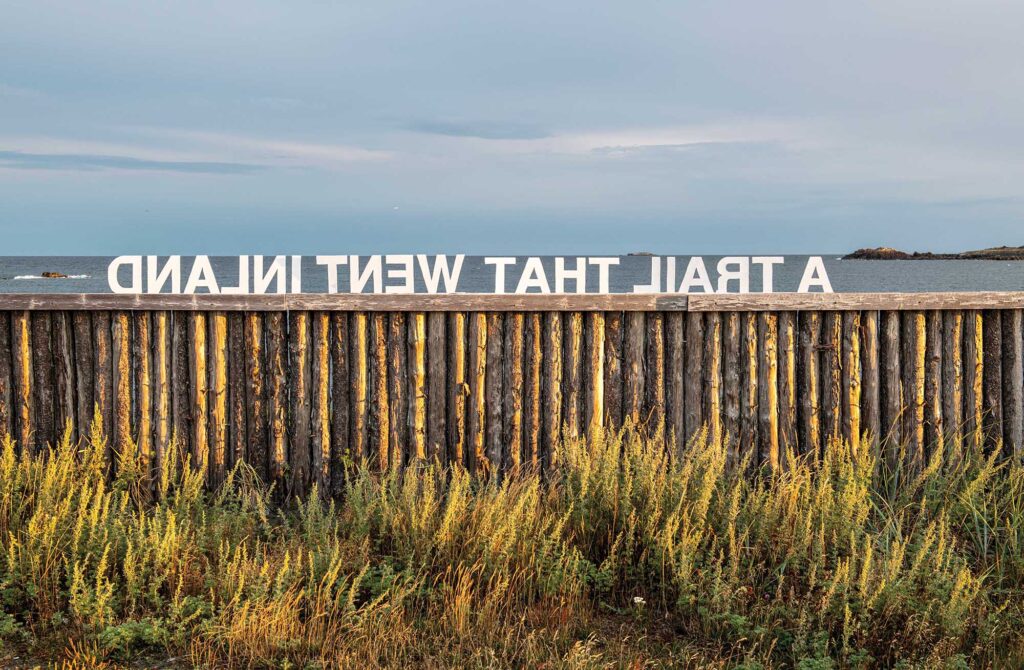
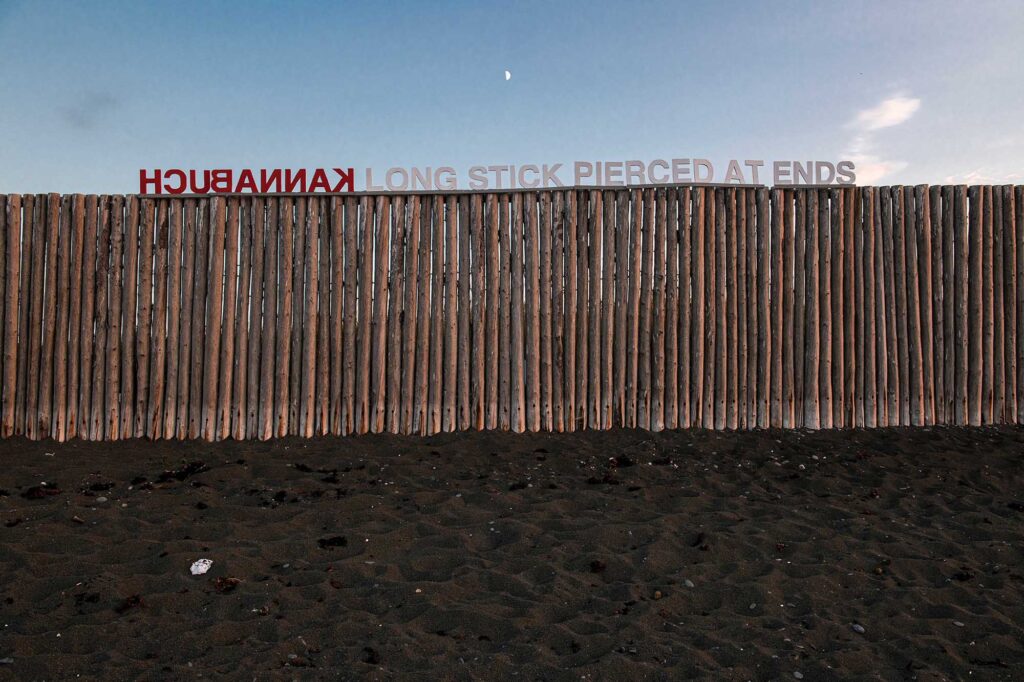
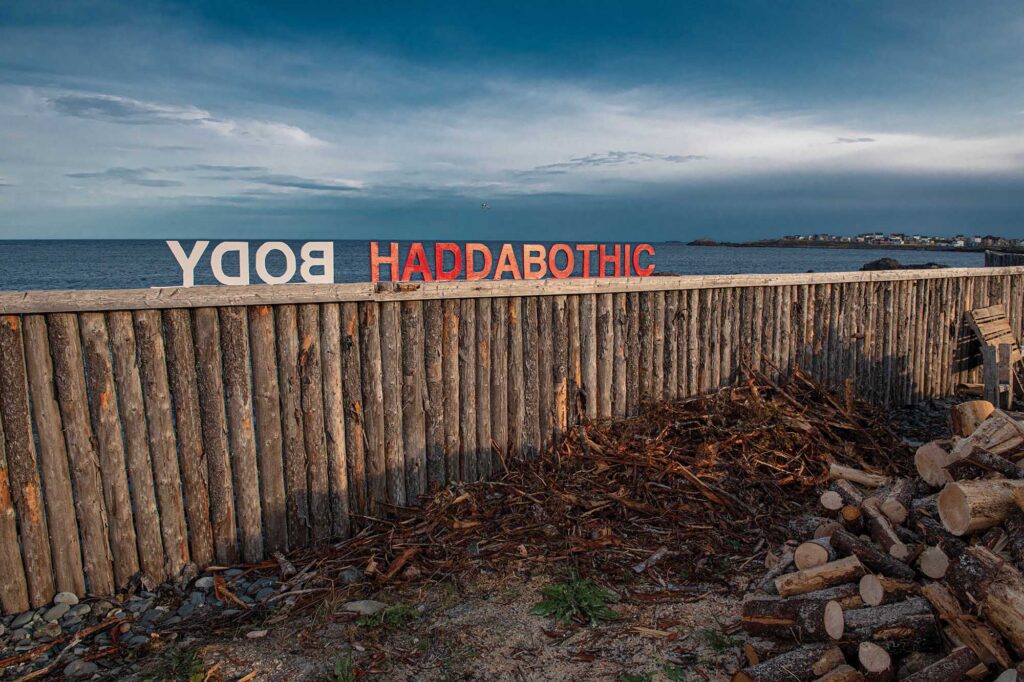
More about Logan MacDonald
Logan MacDonald is an interdisciplinary artist, curator, educator and activist who focuses on queer, disability and Indigenous perspectives. Of European and Mi’kmaq ancestry, he identifies with both his settler and Indigenous roots. His Mi’kmaq ancestry is connected to Elmastukwek, Ktaqmkuk (Bay of Islands, Newfoundland), belonging to the Qalipu First Nation. His artwork has exhibited at L.A.C.E. (Los Angeles), John Connelly Presents (New York), Ace Art Inc. (Winnipeg), The Rooms (St. John’s), Articule (Montréal), and the Künstlerhaus Bethanien (Berlin). He is Vice-Chair of the Indigenous Curatorial Collective and is Canada Research Chair in Indigenous Art at the University of Waterloo.